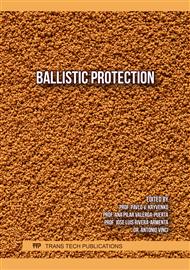p.3
p.13
p.21
p.27
p.39
p.47
p.55
p.63
Effect of Thickness Hardened SKD 11 Modified Steel on the 7.62 mm Ballistic Performance
Abstract:
Armour steel products developed in various forms, function and materials. The usage of steel as bulletproof material has many advantages i.e. easy to transport, easy to be formed and has competitive price compared to other material. The mechanical properties of steel which can be used as bulletproof material must meet certain criteria which can be improved through heat treatment process. The aim of this research is to determine the most suitable heat treatment parameter of SKD 11 modified steel material to improve its hardness and the effect of thickness SKD 11 modified as requirement for bulletproof material. This research processed the SKD 11 modified steel material using heat treatment with 1030°C quenching parameter with 3 hours holding time followed by tempering temperature parameter which vary of 400°C, 500°C, 530°C and 600°C with 4 hours holding time for each tempering. The tempering process is done twice for each sample. Result showed that the highest hardness properties was achieved at 1030°C quenching parameter with 3 hours holding time followed by tempering temperature parameter of 530°C with 4 hours holding time. From the best parameter resulted in highest hardness then SKD 11 modified material for ballistic test varied into 5, 7.5 and 10 mm thickness. TheBallistic performance test level III and level IV showed that hardened SKD 11 modified steel material with 10 mm thickness has the lowest BFS value of 3.32 mm and 7.54 mm with a shattered phenomenon present on the experiment. The experiment result confirm that the SKD 11 modified material meet the BFS allowed limit which 46 mm based on NIJ0101.06 standard.
Info:
Periodical:
Pages:
3-12
Citation:
Online since:
March 2024
Keywords:
Price:
Сopyright:
© 2024 Trans Tech Publications Ltd. All Rights Reserved
Share:
Citation:



